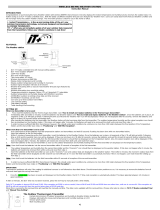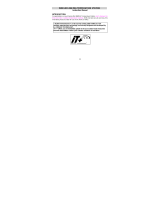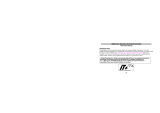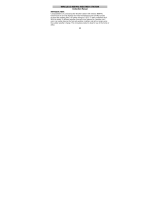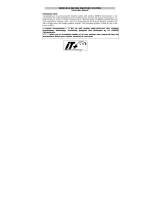
40
temperature and humidity should then be displayed on the
Weather station. If this does not happen after 2 minutes, the
batteries will need to be removed from both units and reset from
step 1.
4. In order to ensure sufficient 868 MHz transmission however, this
should under good conditions be a distance no more than 100
meters between the final position of the Weather Station and the
transmitter (see notes on “Positioning” and “868 MHz
Reception”).
When more than one transmitter is to be used
1. User shall remove all the batteries from the Weather station and
transmitters and wait 60 seconds if setting has been done with
one transmitter before.
2. Insert the batteries to the first transmitter.
3. Within 2 minutes of powering up the first transmitter, insert the
batteries to the Weather Station. Once the batteries are in place,
all segments of the LCD will light up briefly. Following the indoor
temperature and the time as 0:00 will be displayed. If they are not
shown in LCD after 60 seconds, remove the batteries and wait for
at least 60 seconds before reinserting them.
4. The outdoor temperature and humidity from the first transmitter
(channel 1) should then be displayed on the Weather station.
Also, the signal reception icon will be displayed. If this does not
happen after 2 minutes, the batteries will need to be removed
from both units and reset from step 1.
5. Insert the batteries to the second transmitter as soon as the
outdoor temperature and humidity readings from the first
transmitter are displayed on the Weather station.
Note:
User shall insert the batteries into the second transmitter within 45
seconds of reception of the first transmitter.
6. The outdoor temperature and humidity from the second
transmitter and the "channel 2" icon should then be displayed on
the Weather station. If this does not happen after 2 minute, the
batteries will need to be removed from all the units and reset from
step 1.
7. Insert the batteries to the third transmitter as soon as the
"channel 2" icon and outdoor data are displayed on the Weather




















